#bothriolepis
Text
Wikipedia links in lieu of propaganda.
Balbaroo fangaroo, a cenozoic kangaroo with big fangs

Barameda, a carboniferous lobe-finned fish

Barawertornis, a cenozoic dromornithid bird
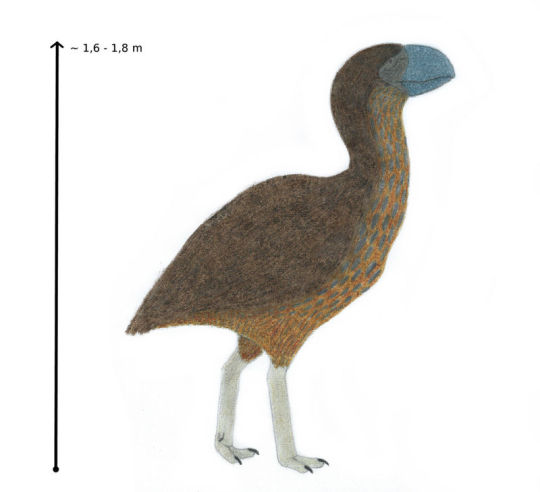
Baru, a massive cenozoic crocodile
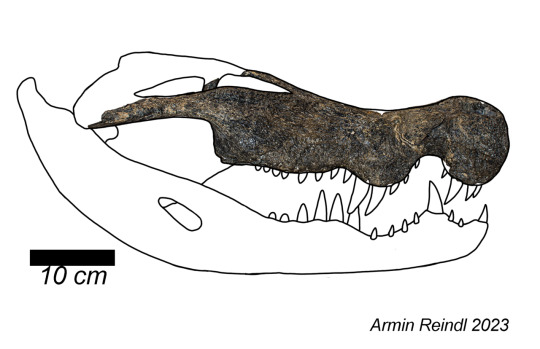
Batrachosuchus, a triassic temnospondyl amphibian

Blinasaurus, a triassic temnospondyl amphibian

Bohra, a cenozoic tree kangaroo

Bothriolepis, a devonian placoderm fish

Burramys brutyi, an extinct species of mountain pygmy possum
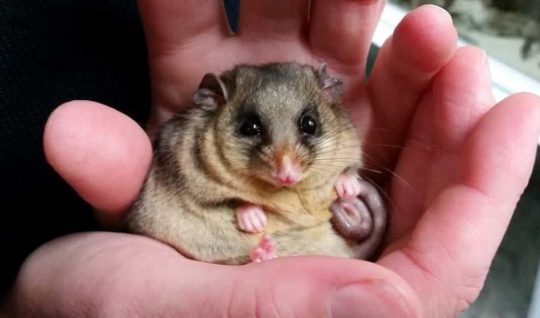
#please reblog#feel free to advocate for your favourite#palaeoblr#australian fossil alphabet thing#balbaroo#fangaroo#barameda#barawertornis#baru#batrachosuchus#blinasaurus#bohra#bothriolepis#burramys#mountain pygmy possum
102 notes
·
View notes
Text
All. Favorites. Are. Valid!
#video#art#my art#paleontology#paleoart#science#dinosaur#dinosaurs#stegosaurus#favorite dino#favorite paleo creature#bothriolepis
43 notes
·
View notes
Text
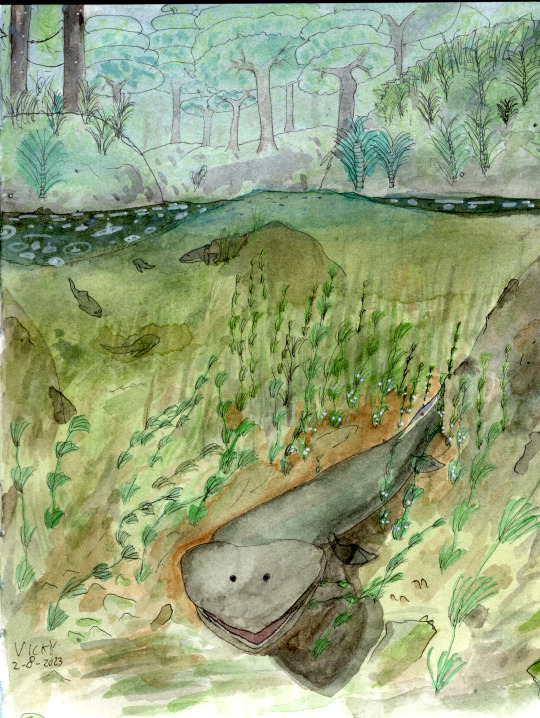
On a rainy Devonian day, a Tiktaalik father guards his eggs in a small forest river. Meanwhile, his hunting mate has her eye on a Bothriolepis. Another Bothriolepis is eating something buried in the river sediment, drawing the attention of a Coccosteus.
I've wanted to draw Tiktaalik for a while. It's easily the most depicted creature of the Devonian, but it always seems to get shown boldly pulling itself onto the land. While that was of course extremely important in hindsight, surely they spent much more of their time living quite happily underwater. So here's some interesting behaviour some lungfish do: the dads guard their eggs after they're lain in water plants.
#tiktaalik#stegocephalian#lobe-finned fish#devonian#bothriolepis#coccosteus#placoderm#archaeopteris#chara#rhacophyton#paleoart#my art#rain#forest#rainy#palaeoblr
81 notes
·
View notes
Text




bothriolepis plush, if u even care
bothriolepis plush by TST Advance (link)
9 notes
·
View notes
Text
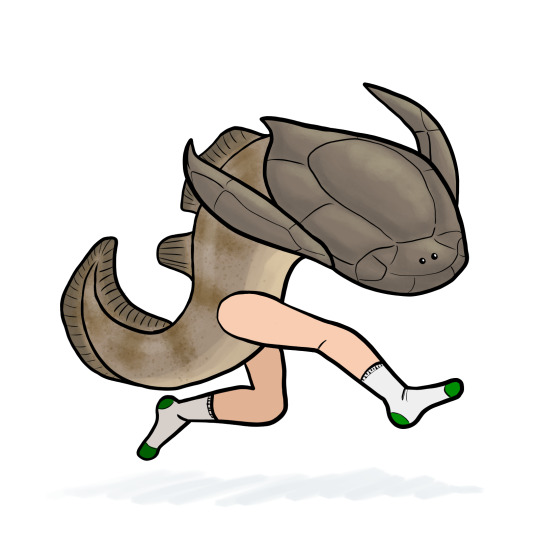
Alternative Mermay #7: Bothriolepis with legs (and socks)
40 notes
·
View notes
Text
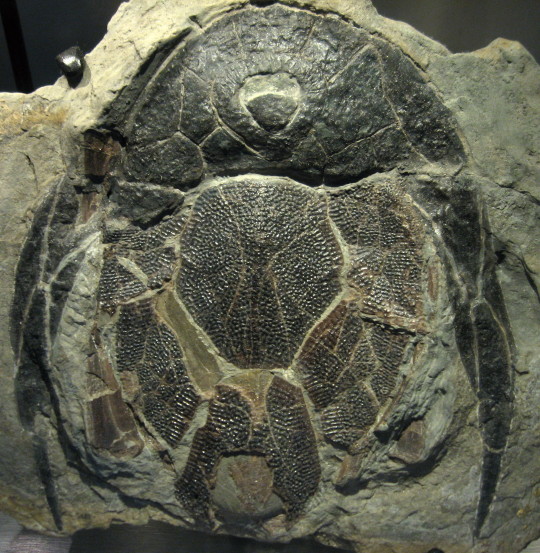

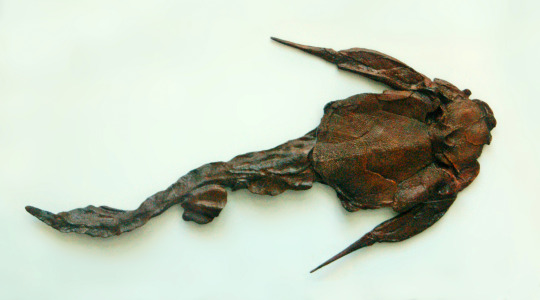
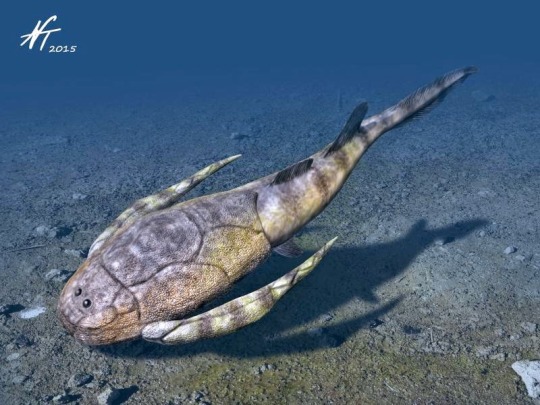
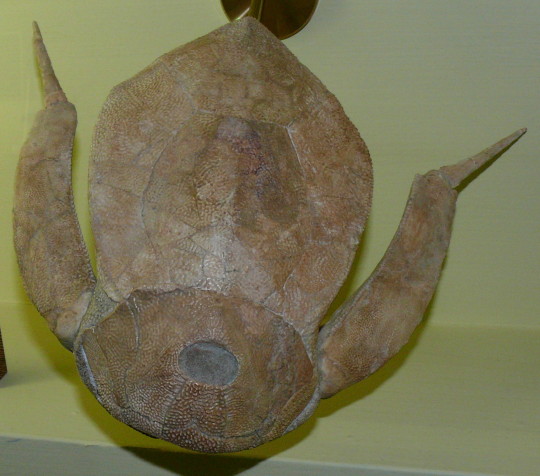


Bothriolepis
(average size: 30 cm / 12 " -- largest species: 170 cm / 67 "; temporal range: 387-360 mio. years ago)
[text from the Wikipedia article, see also link above]
Bothriolepis (from Greek: βόθρος bóthros, 'trench' and Greek: λεπίς lepis 'scale') was a widespread, abundant and diverse genus of antiarchplacoderms that lived during the Middle to Late Devonian period of the Paleozoic Era. Historically, Bothriolepis resided in an array of paleo-environments spread across every paleocontinent, including near shore marine and freshwater settings.[1] Most species of Bothriolepis were characterized as relatively small, benthic, freshwater detritivores (organisms that obtain nutrients by consuming decomposing plant/animal material), averaging around 30 centimetres (12 in) in length.[2] However, the largest species, B. rex, had an estimated bodylength of 170 centimetres (67 in). Although expansive with over 60 species found worldwide,[3] comparatively Bothriolepis is not unusually more diverse than most modern bottom dwelling species around today.
7 notes
·
View notes
Photo
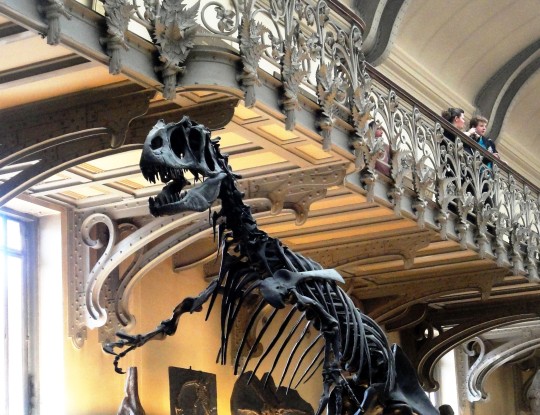
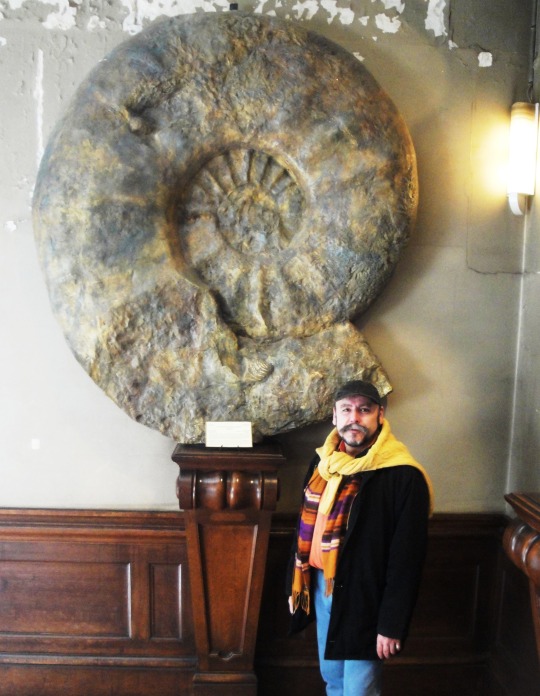

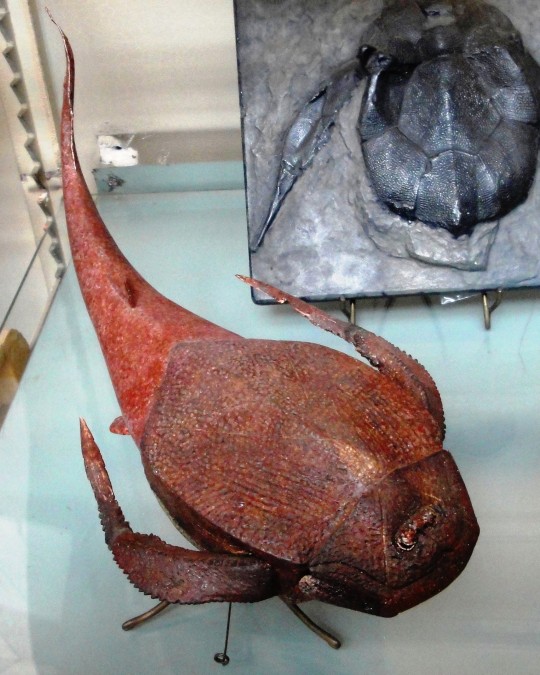


Je reviens à mon projet de présenter la plupart de mes 53800 photos (environ !)
2012. Une journée à Paris. Le Jardin des Plantes, la Galerie Paléontologique.
Entre autres, derrière les balustrades Art Nouveau, un Allosaure ( 3 doigts donc pas Tyrannosaure !), une Ammonite géante (je ne suis pas grand mais quand même on peut voir l’échelle de grandeur !), un Placoderme (poisson “cuirassé”) Bothriolepis...
#souvenirs#paris#jardin des plantes#galerie paléontologique#paléontologie#fossile#squelette#coquille#poisson cuirassé#placodermes#bothriolepis#ammonite#moustache#art nouveau#allosaure#dinosaure
17 notes
·
View notes
Photo

Finally added something new to my own leg - scapanorhynchus! 🦈💖 It’s a prehistoric shark very closely resembling the modern day goblin shark, and this design was heavily inspired by a little plastic toy I have of the same species (see last photo). I nestled it in beside a bothriolepis I also did on myself, which is healed 1 year 6 months. #tattooartist #brooklyntattooer #qttr #newyorktattooer #colorfultattoo #prehistorictattoo #sharktattoo #colorfultattoo #paleontologytattoo #scapanorhynchus #bothriolepis #nerdtattoo (at Brooklyn, New York) https://www.instagram.com/p/CjD2wCNOElQ/?igshid=NGJjMDIxMWI=
#tattooartist#brooklyntattooer#qttr#newyorktattooer#colorfultattoo#prehistorictattoo#sharktattoo#paleontologytattoo#scapanorhynchus#bothriolepis#nerdtattoo
1 note
·
View note
Text

Pushantan/Rotlen
Kingdom: Animalia
Phylum: Chordata
Subphylum: Vertebrata
Infraphylum: Gnathostomata
Clade: Placodermi
Clade: Antiarchi
Clade: Euantiarcha
Clade: Xenodontimorpha
Class: Xenodontida
Order: Prenocaudata
Family: Phrynorhynchidae
Genus: Phrynorhynchus
Speices: P. apintajara (“toad beak of Apintajara" [/apiⁿtəd͡ʒarə/, a shapeshifting demon in the local folklore])
Ancestral species: possibly Bothriolepis ornata
Temporal range: late Miocene to recent (6.5 mya - present)
Information:
Though this creature may look cute and innocent on the exterior, do not let that fool you, as P. apintajara is actually a highly-aggressive predator. A monstrous, terrestrial antiarch-derived placoderm competing with the likes of theropods and pseudosuchians for the niche of apex predator, this creature is exceptionally territorial and does not readily tolerate other large predators, readily attacking on sight and regularly destroying the eggs and nests of other large predators if it comes across them. Lightweight in build, this creature is limber, flexible, and quick on its toes, able to run down prey which would tire out similarly-sized theropods with ease. The second-largest largest member of its clade, the xenodonts or xenodontians (class Xenodontida, “strange teeth” in reference to the sharpened bony plates in its mouth) and the only obligate carnivore within it, this creature’s bony mouth plates can shred through bone like a cleaver and pierce the armor of even some of the most well-defended herbivores. Primarily a sound-based predator, this creature’s eyesight is actually relatively poor, instead using its peculiarly-shaped gill-like pinna to help locate the point of origin for sounds in its environment and pinpoint prey in the dense thicket. In fact, this species’ hearing is superb, able to hear infrasonic frequencies across long distance.
To aid in blending in with its surroundings, the pushantan has two distinct color morphs, one found in the far northern jungles and lush alpine forests it prefers and the other in the northern dry forest regions it sparsely inhabits. The former tends to have a green and gray body with black bands and stripes on its legs and a lime green throat pouch with black highlights while the latter tends to have orange backs with yellow flanks and a red throat pouch but still the same black bands and stripes. Though it prefers inland forest ecosystems, coastal populations are a notable phenomenon, in part due to the lack of competition from other large littoral zone terrestrial predators. Specializing in hunting land-dwelling prey, its long legs also make it adept as an intertidal predator, wading in the shallows for large fish and other creatures to swim by before striking. Typically occupying an area of a couple hundred square miles, it has been known to migrate long distances in search of food, sometimes up to 50 miles in a day. Diurnal in nature, it prefers to hunt during the day, when its eyesight is less heavily impaired and when some larger theropods are asleep. At night, it sleeps under large trees, typically standing up, something which allows arboreal primates to climb onto the creature’s back and pick off insects and other parasites which might otherwise bother it. In times of ecological stress, this species appears to be able to enter a torpor-like state, significantly slowing down its metabolism to reduce its energy expenditure.
While it is far from the largest land predator in its ecosystem, being only around 20 feet long, 10 feet at the shoulder, and weighing around 1.5-2 tons, this animal makes up for this setback through its highly indiscriminate feeding patterns, something which is rare amongst the region’s large carnivores, who typically experience a high degree of niche partitioning. Willing to consume just about anything it can outrun and overpower, its diet includes a wide variety of terrestrial vertebrates. In the mountains, it primarily hunts camelids, deer, notoungulates, horses, and giraffids, and even large mammalian carnivores like amphicyonids, bears, hyaenodonts, and big cats. The most daring may even go after young proboscideans. At lower elevations, non-avian dinosaurs and other megafaunal up to the size of hadrosaurs may be taken as prey. This habit of indiscriminate opportunistic feeding has led some to dub it a “land shark” of sorts.
Though more vocal than its theropod compatriots, its repertoire of sounds is more limited. A loud, booming sound variously compared to a “croak”, a “roar”, or a “bellow” is used as a broadcast call to notify other large carnivores of its presence as well as to establish its territory. Hissing appears to communicate aggression and a deep-pitched “warbling”/“bugling” bellow or roar has been described as being used as part of a threat display to intimidate trespassers on its territory. A sound known as “wooning” has been observed as a form of communication with juvenile specimens.
Unusually for their clade, the pushantan is a sequential hermaphrodite, with most individuals being born female before switching their sex and becoming male as they begin to reach sexual maturity. The mechanisms behind this aren’t entirely known, though it’s believed that certain environmental pressures force this change. Mating occurs year-round and courtship rituals are relatively simple: flashing his bright throat pouch, the male bobs his head up and down while strutting alongside the female. If she accepts his courtship, she will begin to mirror his behavior whereas if she refuses, she will simply walk off. Coitus occurs under a tree, wherein the male, using an organ referred to as “claspers” (modified back fins from its aquatic ancestors), stands side-by-side, angling himself so he’s able to penetrate her and deposit his sperm. As pushantans mate for life, both parents will raise the offspring. In a few weeks time, the female will lay her amphibious eggs, formed in clutches of around 5-8, in a stagnant body of water near the shallows, making sure not to the leave the water’s edge while the male hunts for the both of them. In about 2 weeks, the eggs will hatch, giving birth to a larval tadpole-like form known as woggins, which have fins in place of arms and a prominent tail fin. Over the course of nearly 2 months, the woggins will grow to 16 times their birth size, begin to lose their fins, develop feet, and begin to lose functional gills, the gills instead becoming part of their ear. At this point, they can leave the water but most occasionally return to the water to keep their skin moist, as their skin has not yet developed the airtight scales of their adult forms and is thus susceptible to dehydration. By around 4 months, they will no longer need to return to the water, having begun to develop the spiny horns and scutes of its adult form, at which point, the mother will start to take them hunting. By around 9 months, they will be large enough to fend for themselves, and at around 2 years old, they will have reached adult size, followed by reaching sexual maturity in another 1-2 years. From there, the young pushantan can expect to live well into old age, a good 20-25 years in the wild and an even longer 30-38 years in captivity.
Regularly attacking livestock and humans alike, one of this creature’s names in Xenogaean, sykansykantuẋôtôtna (/sɪkansɪkantuʃɔtɔtnə/), literally translates to “(the) great scourge of (the) heavens”, as this species appears to be one of the few large terrestrial predators in Xenogaea which doesn’t naturally fear humans. This has led the creature to be killed on-sight by most farmers and hunted to near-extinction several times throughout its history, with the current population rebounding from a particularly deadly wave of exterminations in the last 19th century. However, with only around 14,000 mature individuals across its entire range, the species is still at imminent risk of extinction. Other names it goes by include the most commonly-used name, pushantan (/puʂaⁿtan/, a word of unknown etymology but likely a loanword from a pre-Xenogaean substrate language), rotlen (/ro̞t͡ɬɛn/, “thorn back”), or, in English, the thornback. Featured prominently in local artwork, particularly in murals and textiles, it is also considered an underdog in the minds of some locals, seen as a creature which prevails in an environment with much larger and more dangerous predators and in an environment in which humans has attempted to all but exterminate them. Peculiarly, it appears to be one of the few creatures in Xenogaea which shows adaptations specifically for hunting other carnivores, suggesting it may have originally evolved to hunt other predators before adapting into a generalized predator. Though this creature shows the ancestral trend towards 8-toed feet like its ancestors, this appears to be a derived trait rather than a true atavism. Within its class, it appears to be a rather derived branch with few close living relatives, with its closest living relative being the land pufferfish, with which it shares part of its range. Out of all the xenodont placoderms, this species’ evolution is the most well-understood, with fossil relatives known all the way back in the Eocene illustrating the slow upsizing of this species over several tens of millions of years in response to environmental pressures, having evolved from humble origins along the shorelines of an inland sea which would later become the Arava Desert before the drying-up of this region forced them to adapt to hunting larger, more land-based prey. The pushantan appears to be the apex of its clades’ current evolution, having emerged in the late Miocene as the largest of its family to ever live. Popular in online circles for its peculiar appearance, some Western internet users have dubbed it an “axolotl-chicken-porcupine”, its likeness being used in reaction images. In higher elevations near the base of the Isanunti Mountains, it has been known to stalk areas around volcanically active geyser vents and mud pools, ambushing animals which become trapped in the mud or injured by the scolding waters. Due to its peculiar appearance, it is in high demand amongst Western private collectors and is one of the most trafficked megafaunal animals in Xenogaea, further endangering its long-term survival as a species. It is one of the first placoderms to have had its entire genome sequenced.
#speculative evolution#novella#fantasy#scifi#scififantasy#speculative biology#speculative fiction#speculative zoology#worldbuilding#creature art#scifi worldbuilding#fantasy creature#creative writing#fantasy worldbuilding#placoderm#antiarch#Bothriolepis decided it wanted to be T. rex XD#creature design#creature#original species#spec evo#sci fi#spec bio
7 notes
·
View notes
Text
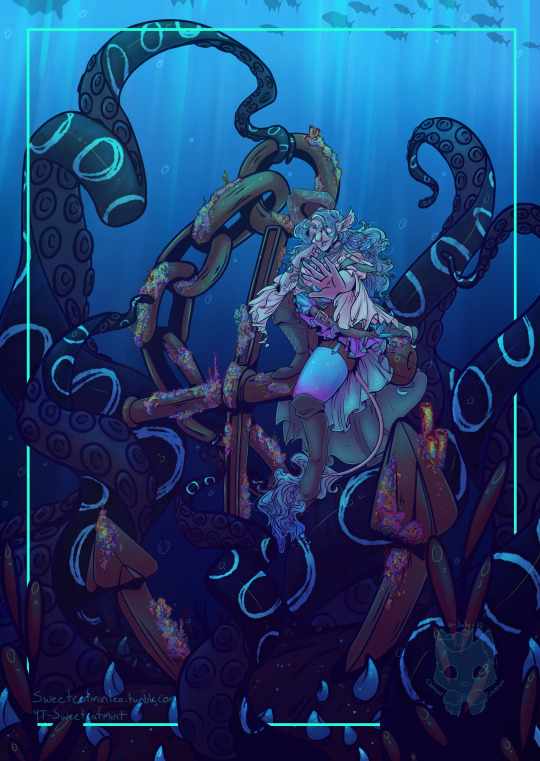
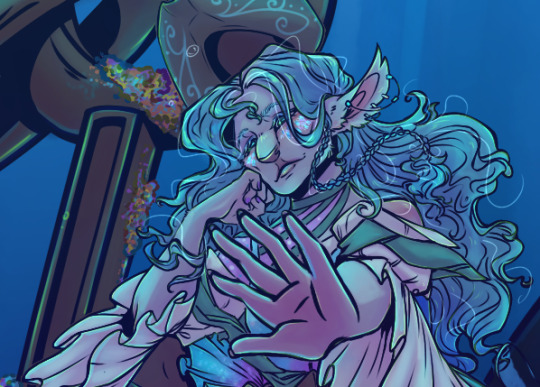
Artfight: Too busy doing hot girl stuff to worry about terrors of the deep
[Image description: A digital illustration of a blue/grey firbolg with long blue hair and pirate attire sitting atop an old coral encrusted anchor at the bottom of the ocean. She has her head propped up on her arm while she inspects her nails, oblivious or simply unbothered by the giant black tentacles rising up around her.
The next image is a close up of the first.
Description end.]
This is @bothriolepis 's barbarian Dasani. I had a little too much fun drawing her and went a little overboard haha
Please check the reblogs for the speedpaint ^u^
#art#digital art#dnd#dungeons and dragons#firbolg#barbarian#artfight 2022#team wither#speedpaint#@bothriolepis
20 notes
·
View notes
Photo




Prehistoric Reef Cam Footage: Field Notes
A series of Horizontal Baited Remote Underwater Video Stations (H-BRUVS) were lowered into the sea over the Late Devonian Canning Basin reef system, in what is now the Kimberley region of Western Australia. The purpose of this research study was to understand grouping and trophic interactions within the Canning Basin Biota. Screenshots of the footage from the third camera (file name HBRUVS_Cann_03.mp4) are shown here to present some select interactions observed during the day's recording session. The BRUVS was baited with chopped Bothriolepis.
Slide 1: After being lowered into the water at 10am, the bait bag draws a small group of Mimipiscis toombsi that begin to feed on the bait. Placoderms Rolfosteus canningensis and Camuropiscis laidlawi are observed swimming among the stromatoporoid corals, seeming disinterested in the bait bag. Acuticryphops trilobites are visible on the seafloor and ammonites (likely Ponticeras sp.) swim slowly suspended in the water column.
Slide 2: The bait bag has drawn a larger group of Mimipiscis, the gathering has been disrupted by the presence of Mcnamaraspis kaprios. The placoderm is larger and has a stronger bite than the Mimipiscis, and claims feeding privileges while they keep their distance. Materpiscis attenboroughi is briefly visible in the lower left of the frame, and slowly drifted along the sand before disappearing off frame. One Rolfosteus individual continues to swim around the stromatoporoids.
Slide 3: The feeding session is interrupted by a large Eastmanosteus calliaspis as it attacks the bait bag, startling the Mimipiscis and Mcnamaraspis into fleeing. This was the only Eastmanosteus individual observed in the week since beginning video surveys, and their usual habitat is still unknown. A dramatic and exciting encounter for the team upon rewatching today's footage.
Slide 4: This slide is indicative of the rest of the footage until the thirds BRUVS was recovered at 17:00. With the bait bag torn off by the Eastmanosteus, no further fish were drawn to the camera and activity in the area was limited. This slide does, however, show a rare sighting of the predatory Onychodus jandemarrai toward the background, likely hunting. Materpiscis is visible sheltered at the base of the reef, and the small saltwater lungfish Rhinodipterus kimberleyensis can also be seen.
Field notes for future reference:
- Use heavier weights on the BRUVS to prevent motion
- Investigate use of a metal cage or canister instead of the net bag, as the bag is evidently not strong enough to withstand an attack by the largest predators of the area
#paleoart#paleontology#prehistoric#fossils#gogo formation#placoderms#reef#marine biology#trail cam footage#my art#palaeoblr
2K notes
·
View notes
Text

Art piece for Flight Rising’s 2022 Secret Santa gift exchange.
This was for Bothriolepis from Ice clan.
255 notes
·
View notes
Text

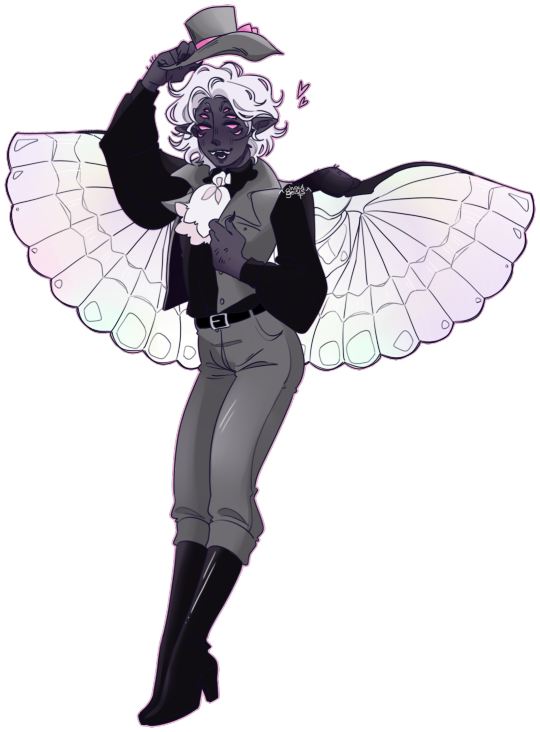

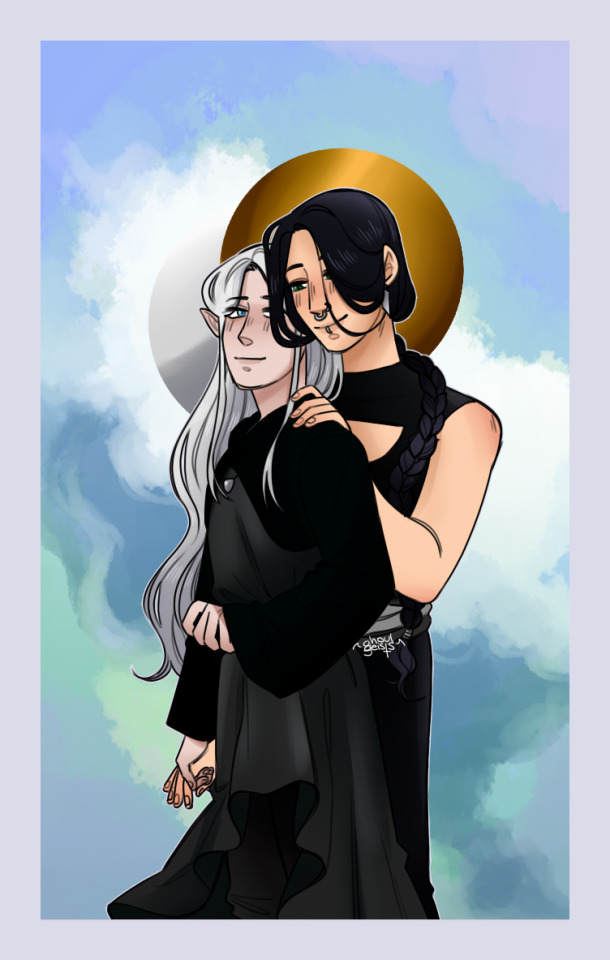
More artfight attacks!! whee
characters belong to @bothriolepis, @alarnia, @/duckstuff2008 (twt), and @atthepriceofoblivion + @eidolonartt ♥
#artfight#artfight 2023#af 2023#team vampire#my art#ghouldraws#orc#half orc#drow#insect#oni#no of course i didnt burn out haha what are u talking about
57 notes
·
View notes
Text


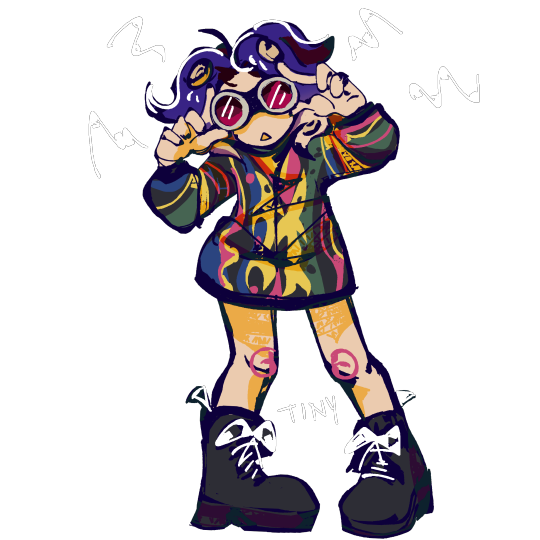
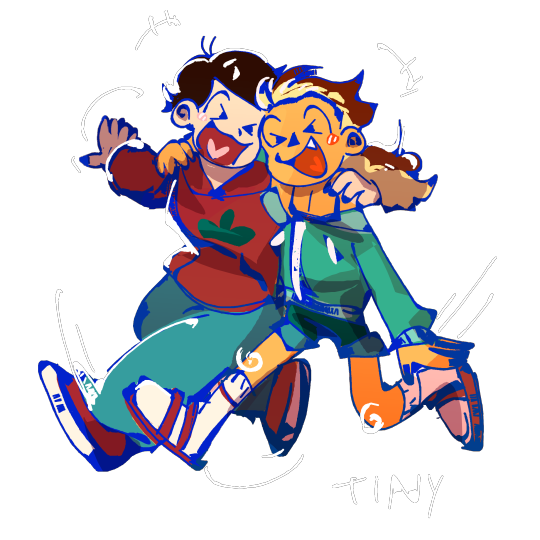

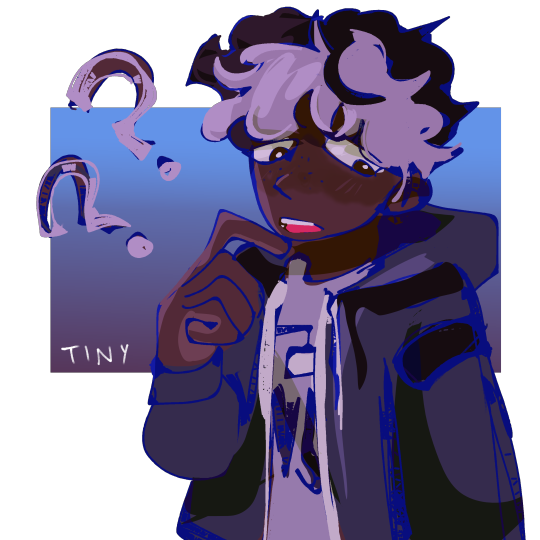
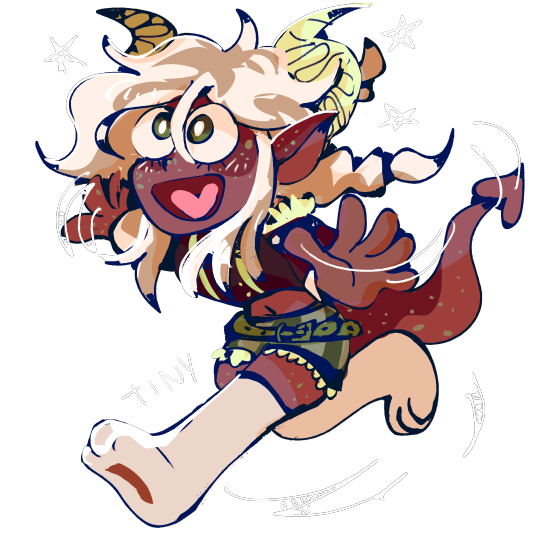

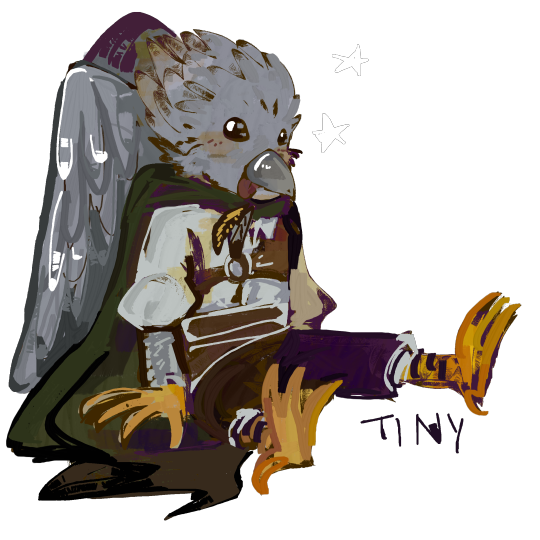

ARTFIGHT ATTACKS...---...UHHHH 70/85
<< rainy for @/Starbowgalaxy on artfight / micah for @chewwypepsicola / toe for @sabspars / kiiro y osomatsu for@/impmilk on artfight / mona & cavity for @loathemetc / rack for @/SoLo18 on artfight / pickle for @bothriolepis / tallow for @ideligo / penna for @sugared-sweet-coffee / darling and mao for @flyingspicerack (hi) >>
49 notes
·
View notes
Text
Last night, I dreamt that I had a pack of snacks shaped like prehistoric fish - specifically Leedsichthys and Bothriolepis. Unfortunately, I woke up before I even got to open the pack.
15 notes
·
View notes
Text

Life reconstruction of the non-marine component of the Waterloo Farm ecosystem: Hyneria udlezinye is shown together with the tetrapods Umzantsia amazana and Tutusius umlambo, the placoderms Groenlandaspis riniensis and Bothriolepis africana, the coelacanth Serenichthys kowiensis, the lungfish Isityumzi mlomomde, and a cyrtoctenid eurypterid. Image credit: Maggie Newman / R.W. Gess.
4 notes
·
View notes